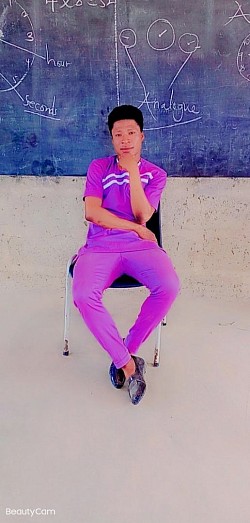Creative art entertainment and more
COMPUTING
ABOUT THE AUTHOR
QUAINOO MANUEL DADZIE is the writer of this book, which considering where you’re reading this, makes perfect sense. He is a student of Breman Asikuma Senior High School. He is best known for writing Information and Communication Technology. He also enjoys six months Computer studies at Atlantic International University Online Program, while he was a student at Atlantic International University Online Program He is a consistent honor student, and while he was under me, he excelled as the top student. Other instructors and professors in the same department talk highly of his performance. In addition to him being a dedicated and hardworking student. He does the tasks given to him with a positive attitude. He is able to establish great research and wonderful explanation with people of all ages and has excellent written and verbal communication skills.
LITERATURE
INTRODUCTION TO LITERATURE
What is literature?
The definition of literature broadly encompasses written works used to transmit culture.
However, literature is not always limited to the written word.
The literature meaning can include stories told in the oral tradition and visual literature, such as drama that is intended to be performed before an audience.
In addition, literature can be classified into different forms. The term form refers to the writing's structure or organization.
Each literary form can be divided into smaller categories, known as genres. Each genre shares numerous unifying characteristics.
Literature, broadly defined, encompasses any form of written or oral work used to express culture, knowledge, and artistic creativity. It includes various genres like novels, poems, plays, and even oral traditions and visual literature like drama. Literature can be classified by language, historical period, genre, and subject matter.
Key Aspects of Literature:
Diverse Forms:
Literature exists in many forms, including fiction (novels, short stories), non-fiction (essays, biographies), poetry, and drama.
Genre and Subgenres:
Genres like fiction, poetry, and drama each have subgenres, such as romance, historical fiction, and epic poetry.
Oral Traditions:
Oral literature, including stories and songs, is a significant part of literary heritage and can be transcribed.
Aesthetic Merit:
Literature often aims for aesthetic excellence and imaginative expression through the conscious arrangement of words.
Historical Context:
Literary works are shaped by and reflect their historical and cultural contexts.
Functions:
Literature serves as a method of recording, preserving, and transmitting knowledge, as well as providing entertainment, social commentary, and personal reflection.
Critical Analysis:
Literature is often studied through critical analysis, examining themes, symbolism, style, and authorial intent.





